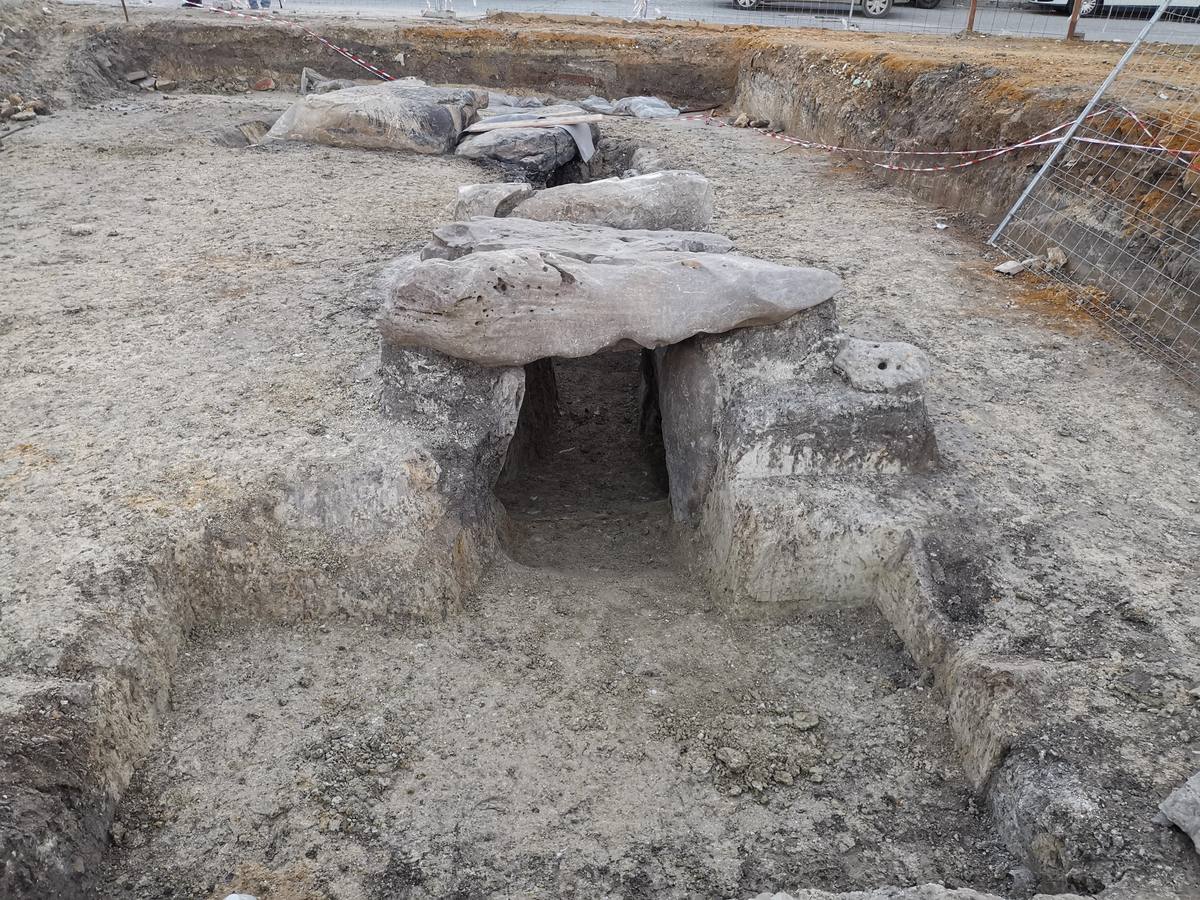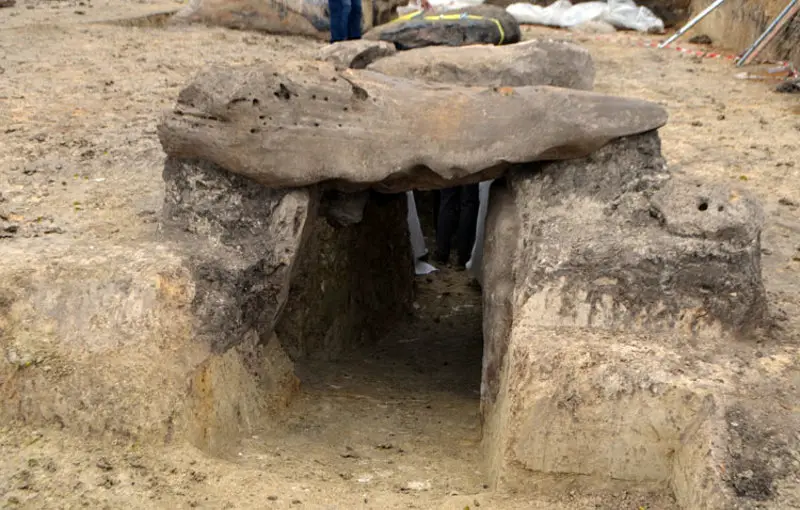The Cañada Real dolmen is an ancient funerary monument found in a Neolithic necropolis, located in the city of Los Molares in the province of Seville, Spain.

The dolmen has an “L” plan gallery that measures 8 metres in length, while the other side measures approximately 3.5 metres. It was first discovered in 1968 and was excavated by professor D. Juan de Mata Carriazo. Further studies in 1980 revealed a second funerary monument, the El Palomar dolmen, which was excavated by the Archaeological Museum of Seville.
Both sites date from the Neolithic period around 4000-3500 BC, when the region saw the arrival of the first agriculturalists that started the tradition of burying their dead in dolmen tombs.
A recent survey commissioned by the Spanish National Research Council (CSIC) from Extremadura, has revealed evidence of additional underground structures using Ground Penetrating Radar (GPR). GPR is a non-intrusive geophysical method that uses radar pulses to image the subsurface to investigate underground anomalies and archaeological features.

The GPR survey has identified at least two other dolmens in the vicinity of the Cañada Real dolmen, located at a depth of several metres deep. According to the director of the archaeological investigations: “the underground anomalies reflect a figure of similar dimensions to those of the Neolithic dolmen with an L-shaped plan, the typical local architecture of the prehistoric megaliths of Los Molares.” In addition, “there is another large structure buried very close to the Cañada Real dolmen that looks like a corridor-type dolmen with a chamber.”
The survey has also revealed the outline of circular features that could correspond to Neolithic type roundhouses used by the early tribal societies living near the necropolis. According to the researchers, little is known about the domestic spaces of the dolmen builders, so the discovery from future excavations could give archaeologists new information about the ancient people that lived in the Los Molares area from their material culture left behind.



